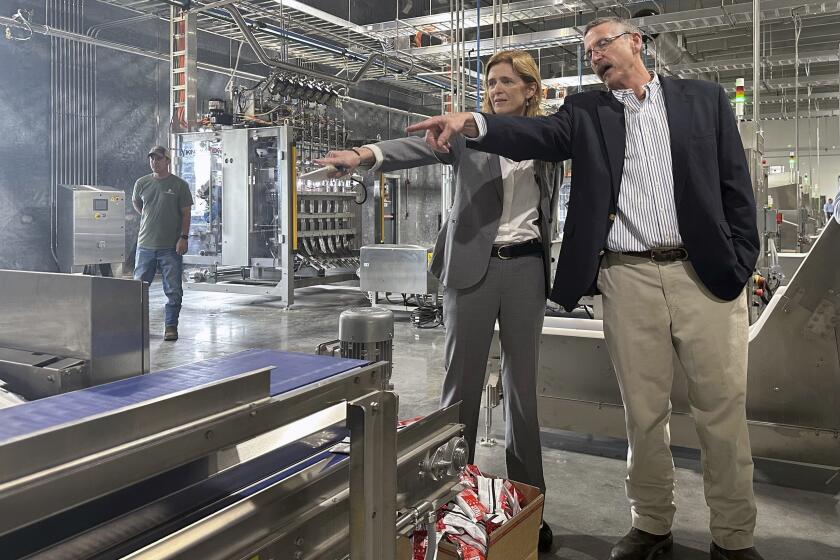Clean energy in Georgia comes with some nasty side effects
BUTLER, Ga. Solar farms sprout across South Georgia like mushrooms after a storm. Biomass factories down east produce wood pellets to meet Europe’s renewable energy needs.
Natural gas pipelines crisscross the state delivering cleaner energy to homes and factories. Huge turbines off the coast might one day harness the wind’s all-natural power.
Georgia is finally embracing the renewable energy revolution that promises to protect the climate and reduce dependence on foreign-sourced oil.
Who could possibly oppose a brighter, cleaner future?
Turtles, that’s who.
Or, more specifically, gopher tortoises, a potentially endangered species that serves as the state’s official reptile and makes its home in South Georgia fields where solar panels will soon cover thousands of turtle-friendly acres with translucent panels catching the sun’s rays.
Or the millions of birds who’ve been pulverized by giant wind turbines. Or the trees whose carbon-sucking benefits disappear once they’ve been chopped up. Or the landowners whose aesthetic and nest-egg sensibilities are diminished once a pipeline runs through their property.
It ain’t easy being green where good intentions increasingly meet bad and unintended consequences.
“People are trying to do the right thing environmentally,” said Philip Cafaro, a former University of Georgia master’s student who’s president of the International Society for Environmental Ethics. “But developing any energy source involves trade-offs, including using up land that then isn’t available for gopher tortoises and other wild species.”
Nowhere is the ethical quandary more real than Taylor County, halfway between Macon and Columbus. The Fall Line Sandhills Wildlife Management Area sits right next to the county’s industrial park. The former is prime tortoise habitat, an 876-acre oasis of scrub pine and soft soil. The latter contains equally large, under-construction solar arrays.
“HANDS OFF,” reads a sign, in red, over a picture of a gopher tortoise displayed in the wildlife area’s information kiosk. “Georgia’s official reptile is protected by law.”
It adds: “Amazingly, at least ten threatened or endangered species exist on this relatively small tract. Some of the species are quite imperiled due to a variety of factors, but primarily because of habitat loss resulting from land alteration.”
Georgia sits in an alternative energy sweet spot. The sun shines hot enough and often enough to fill the electric grid with solar energy. Offshore winds may one day twirl turbines to create electricity. Natural gas replaces coal and shutters Georgia Power coal-fired plants. And three-fourths of Georgia is covered by trees, another energy source reducing Europe’s dependence on fossil fuels.
Georgia is one of the nation’s top producers of wood pellets made primarily from otherwise discarded tree limbs and scrap. Wood, once burned, releases less carbon dioxide than coal and reduces the amount of greenhouses gas.
Burnt wood, nonetheless, pollutes the atmosphere. Fewer trees also means less plant life capable of sucking up noxious carbon in the first place. And there’s no guarantee the wood mills, including a half dozen operating in Georgia, will not turn whole trees into pellets, especially as the world’s appetite for “cleaner” energy sources grows.
Making electricity from the wind seems like the most pure of energy sources. Georgia Power and its parent company have been studying the efficacy of wind energy off Tybee Island for a decade. The utility is also expected to install four smallish test turbines on Skidaway Island near Savannah by 2016.
Massive wind turbines kill between 214,000 and 368,000 North American birds annually, according to a recent public-private study. And neighbors complain about the unsightliness of towering turbines marring mountain or ocean views.
Yet cats kill maybe 10 times as many birds, the report says. And scientists say a warmer planet, due to climate change, will ultimately kill far more birds.
“It’s important to remember that we have a power-hungry society and the energy has to come from somewhere,” John Anderson, an official with the American Wind Energy Association, recently told USA Today. “No form of energy generation is free from impact.”
Certainly not natural gas. While much cleaner than coal, gas also gives off carbon. “Fracking,” or the controversial method of extracting the gas from underground, also releases methane, a more potent greenhouse gas. Massive amounts of water, another precious resource, are shot underground to free up the gas. So too are chemicals that may leach into the groundwater.
Fracking is nonexistent in Georgia, but natural gas flows widely. Half of Georgia Power’s capacity comes from gas. And pipelines crisscross the state with new projects angering communities across eastern and southwestern Georgia.
Though still a very small part of Georgia’s energy portfolio, solar power is growing quickly. Panels crop up on homes, businesses and farms. Taylor County alone accounts for five massive solar arrays under construction that will cover 3,500 acres.
Taylor lies just below the Fall Line, the geologically distinct region that stretches from Columbus to Macon and Augusta where the land is sandy, relatively cheap and, in spots, close enough to the power grid. Don Imm, with the U.S. Fish and Wildlife Service in Athens, labels the area “very tortoise-rich” and a perfect habitat for the turtles that can burrow 50 feet underground while sharing their homes with endangered indigo snakes, gopher frogs, lizards, quail, spiders and dozens of other critters.
Solar panels keep the sun and rain from hitting the ground and growing turtle food. The arrays are fenced off too, further limiting the wandering tortoises’ habitat.
Donald Chase, a peanut farmer in nearby Oglethorpe with 10 acres of solar panels on his land, said climate change trumps the tortoises.
“If you’re really worried about that, turn off your air conditioner. Don’t run one in your house. Don’t run your car. Then you can talk about it,” he said. “It’s a pretty weak argument.”
Georgia Power, which will receive solar energy generated in Taylor County, expects developers “to be sensitive to the environmental impact of their development.” It has also created a gopher tortoise refuge in Burke County, though none have been relocated from solar farms.
The Fish and Wildlife Service mapped tortoise habitats so utilities and developers can avoid them.
“There are a lot of geopolitical reasons we should wean ourselves from fossil fuels and, hopefully, curb our impact on climate change,” Imm said. “We just need to balance the benefits and the risks.”
(c)2015 The Atlanta Journal-Constitution (Atlanta, Ga.)
Visit The Atlanta Journal-Constitution (Atlanta, Ga.) at www.ajc.com
Distributed by Tribune Content Agency, LLC.
More to Read
Start your day right
Sign up for Essential California for news, features and recommendations from the L.A. Times and beyond in your inbox six days a week.
You may occasionally receive promotional content from the Los Angeles Times.






